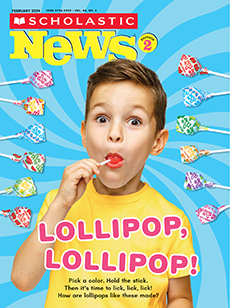Academic Standards
Learning Objective:
Children will identify and explore the differences between two types of communities.
Social and Life Skills:
communities, community helpers, jobs
ELA Skills:
key details, vocabulary, writing, create visuals
Page 4 Skill:
double bar graph
Vocabulary:
communities, rural, tractor operator, urban, subway conductor
CCSS:
RI.2.1 key details; RI.2.2 identify the main topic; RI.2.4 determine meanings of words; RI.2.5 text features; RI.2.10 read informational texts; RF.2.3 decode words; RF.2.4 read on-level texts; W.2.1 writing; SL.2.1 collaborative conversations; SL.2.3 ask and answer questions; SL.2.5 create visuals
Watch the video
Watch the video
Build background knowledge about things long ago and today by watching “Home in Three Communities.” When you’re done watching, ask the following question: What are the three types of communities?
Preview new vocabulary words
Preview new vocabulary words
Project the online vocabulary slideshow and introduce this issue’s featured words.
Set a purpose for reading
Set a purpose for reading
- Have students do a picture walk through the issue, then read and discuss the cover. Ask students what similarities and differences they notice between the two jobs.
- Then before turning to page 2, say, “As we read the article, we are going think about what is different about these communities.”
Use the Read and Think skill sheet to check comprehension as you read the issue as a class. At each stopping point on the sheet, pause to discuss the questions. Students can fill out the sheet as you go along.
- Reading Quiz (skill: comprehension)
- My Community (skill: writing, create visuals)
- Compare Three Communities (skill: compare/contrast)
- Word Work (skill: vocabulary)
Play the online game: Build a Community
(skill: content knowledge)
Read a paired text: Dear Primo A Letter to My Cousin by Duncan Tonatiuh
Your class will enjoy a modern spin on the classic “city mouse, country mouse” story. This bilingual text follows cousins from different community types as they exchange letters describing how they live, work, and play.
Read an issue from the archive: Getting to School in My Community (September 2017)
Learn what commuting to school looks like in different communities with the issue “Getting to School in My Community” (September 2017).
